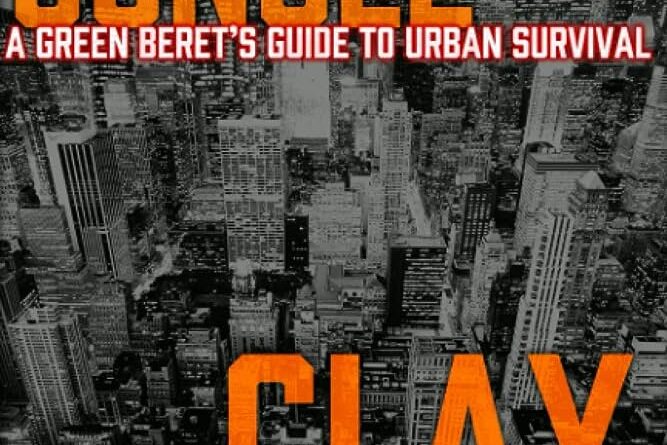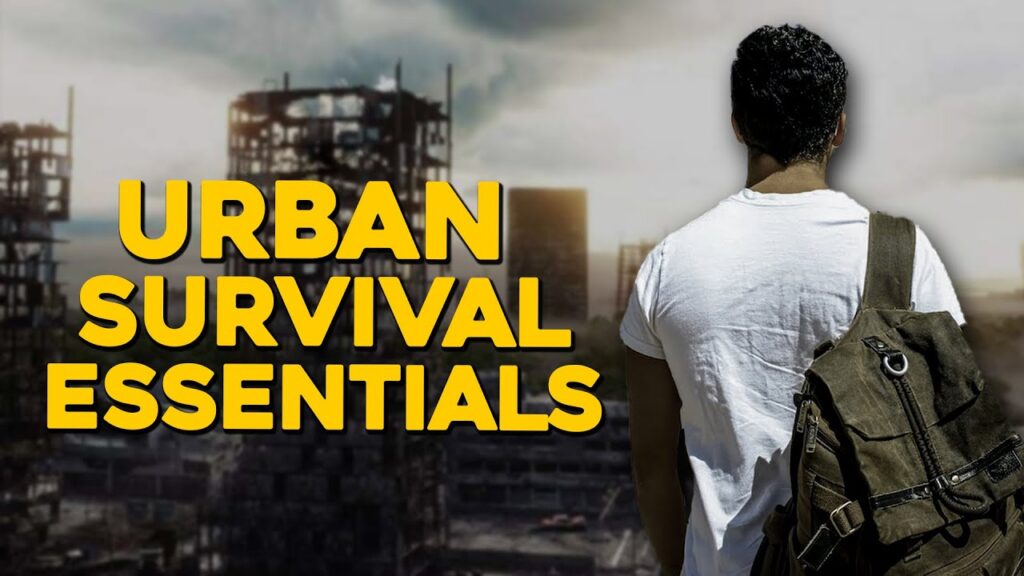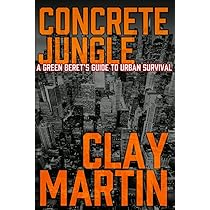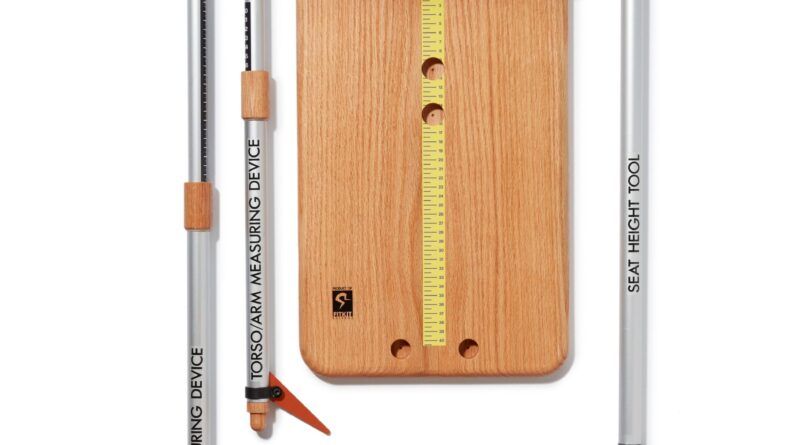
Are you ready to navigate the bustling streets of the concrete jungle? Whether you’re a city dweller or just visiting, it’s important to be prepared for the unexpected. That’s where urban survival kits come in. These specially designed kits are tailored for the challenges and demands of urban environments, providing you with the essential tools and supplies to handle emergencies and stay safe. From compact first aid supplies to versatile multi-tools, urban survival kits are the ultimate companion for anyone seeking to thrive in the urban wilderness. So, let’s unravel the mysteries of these survival kits and uncover the key components that will ensure your survival amidst the chaos of city living.

This image is property of www.thearmorylife.com.
I. Urban Survival Kits: An Overview
Urban survival kits are specially designed packages of essential items and tools that can help you navigate and survive in an urban environment during emergency situations. While survival kits are commonly associated with wilderness and outdoor adventures, having a well-prepared urban survival kit is equally important given the unique challenges of city living.
In urban areas, you may face situations such as natural disasters, power outages, riots, or even accidents that can disrupt the normal functioning of the city and put your safety and well-being at risk. Urban survival kits provide you with the necessary resources to handle these situations and increase your chances of survival.
II. Essential Items for Urban Survival
When putting together an urban survival kit, it’s important to consider the essential items that will fulfill your basic needs and provide you with the means to navigate and adapt to the urban environment effectively. Here are some key categories of items to include in your kit:
A. Water and Hydration
Access to clean drinking water is essential for survival in any situation. In your urban survival kit, include water purification tablets or a portable water filter to ensure a safe and reliable source of drinking water. Additionally, pack durable water bottles or collapsible containers to store and carry water.
B. Food and Nutrition
In times of crisis, access to food may be limited or cut off completely. Pack non-perishable food items like energy bars, canned goods, and dehydrated meals to sustain yourself. Consider the nutritional value and shelf life of the food you choose, and don’t forget to include a can opener or multi-tool for opening cans.
C. Shelter and Clothing
Urban survival kits should include items that provide shelter and protection from the elements, such as a lightweight emergency tent, sleeping bag, and emergency blankets. Additionally, pack extra clothing and footwear suitable for different weather conditions and situations.
D. First Aid and Medical Supplies
Having a comprehensive first aid kit is crucial for urban survival. Include bandages, antiseptic ointments, pain relievers, medical tape, and any necessary prescription medications. Consider attending a first aid training course to learn how to provide emergency medical aid effectively.
E. Communication and Navigation
During emergencies, communication and navigation become paramount. Include a fully charged, portable battery pack or solar charger for your phone, a whistle for signaling, and a compass or GPS device for navigation. It’s also useful to have a printed map of the area, as electronic devices may fail or lose signal.
F. Tools and Equipment
Having a set of versatile tools can help you tackle various tasks in an urban survival situation. Include items such as a pocket knife, multi-tool, duct tape, a lightweight shovel, and a pry bar. These tools can assist with shelter building, repairs, and improvisation.
G. Personal Safety and Security
Urban environments can present safety risks, especially during crisis situations. Pack personal safety items like a personal alarm, pepper spray for self-defense, and a whistle to attract attention if needed. It’s important to familiarize yourself with the legal regulations surrounding self-defense items in your area.
H. Lighting and Energy Sources
Ensure you have reliable lighting sources in your urban survival kit. Include items such as a headlamp, flashlight, or glow sticks. Consider carrying extra batteries or a hand-crank flashlight for long-lasting power. A portable, solar-powered charger for electronic devices can also be useful.
I. Sanitation and Hygiene
Maintaining good hygiene habits is essential even during emergencies. Include items such as wet wipes, hand sanitizer, toilet paper, and feminine hygiene products. Pack a small, portable toilet or plastic bags for waste disposal, as access to functioning bathrooms may be limited.
J. Miscellaneous Items
Don’t forget to include other miscellaneous items that may be specific to your needs or situation. This could include cash in small denominations, waterproof matches, a whistle, a signal mirror, a sewing kit, spare glasses or contacts, and a small amount of duct tape.

This image is property of Amazon.com.
III. Considerations for Urban Survival Kit Selection
When choosing an urban survival kit, several factors should be considered to ensure it meets your needs and maximizes your chances of survival. Here are some important considerations:
A. Portability and Size
An urban survival kit should be portable and compact, allowing you to carry it comfortably in case you need to evacuate or move quickly. Consider the weight and size of the kit when selecting one, keeping in mind that you may need to carry it for extended periods.
B. Durability and Longevity
Choose a kit made from durable materials that can withstand rough handling and adverse conditions. The items in your kit should be reliable and long-lasting, as you may need to rely on them for an extended period. Consider the quality and durability of the items included in the kit.
C. Multi-Functionality
Look for kits that include items with multiple functions, as this will help minimize the number of items you need to carry while maximizing their utility. For example, a multi-tool can serve various purposes, reducing the need for individual tools.
D. Appropriateness for Urban Environments
Ensure that the kit you choose is specifically designed for urban survival situations. It should include items tailored to the challenges and needs of an urban environment, such as tools for urban navigation and self-defense. Consider the unique aspects of urban survival when selecting a kit.
E. Budget-Friendly Options
Survival kits can range in price, so it’s essential to consider your budget. While investing in a high-quality kit is advisable, there are budget-friendly options available. Compare different kits and assess their value for money to find one that suits your budget without compromising on essential items.
IV. Recommended Urban Survival Kits
Having an urban survival kit readily available can mean the difference between life and death during an emergency. Here are some recommended kits that offer a range of options:
A. Basic Starter Kits
Ideal for beginners, basic starter kits generally include essential items for survival, such as water purification tablets, non-perishable food, a basic first aid kit, and lighting sources. These kits are a great entry point for building your urban survival kit.
B. Intermediate Kits
Intermediate kits offer a step up from basic starter kits, providing additional tools and equipment for urban survival. They often include more comprehensive first aid supplies, personal safety items, and additional resources for shelter building and fire starting.
C. Advanced Kits
Advanced kits are designed for those who want to be thoroughly prepared for any urban survival situation. These kits often include a wider range of tools and equipment, more extensive medical supplies, advanced navigation devices, and additional items for personal safety and security.
D. Customizable Kits
For those who prefer to tailor their survival kit to their specific needs, customizable kits provide the flexibility to choose individual items to include. These kits allow you to select items based on your skill level, specific risks you may face, and personal preferences.

This image is property of Amazon.com.
V. Urban Survival Skills to Complement Your Kit
While having a well-stocked and comprehensive survival kit is essential, it is equally important to develop and hone the necessary skills to effectively use the items in your kit. Here are some key urban survival skills to consider:
A. Navigation and Wayfinding
Knowing how to navigate through the urban landscape is crucial, especially when normal transportation and communication infrastructure may be disrupted. Learn how to read maps, use a compass or GPS device effectively, and familiarize yourself with the layout of your city.
B. Self-Defense and Personal Safety
In urban environments, personal safety is paramount. Consider taking self-defense classes to learn techniques for protecting yourself in dangerous situations. Develop situational awareness skills to identify potential threats and avoid risky situations whenever possible.
C. Emergency Medical Aid
Having a well-stocked first aid kit is essential, but knowing how to use the items effectively is equally important. Consider taking a first aid and CPR course to learn basic life-saving techniques such as administering CPR, controlling bleeding, and treating common injuries.
D. Communication Skills
During emergencies, effective communication can make a significant difference in your safety and the safety of others. Develop communication skills such as using emergency radio protocols, clear and concise verbal communication, and relaying important information accurately.
E. Fire Starting and Cooking
Being able to start a fire and cook food can provide warmth, comfort, and sustenance during an emergency. Learn different fire-starting techniques, familiarize yourself with safe cooking methods, and practice using compact cooking equipment or improvised cooking methods.
F. Resourcefulness and Adaptability
Urban survival often requires resourcefulness and adaptability due to limited resources and the need to improvise solutions. Develop problem-solving skills, learn basic DIY repair techniques, and practice adapting to unexpected situations to enhance your survival capabilities.
VI. Urban Survival Kit Maintenance and Upkeep
Once you’ve assembled your urban survival kit, it’s crucial to regularly maintain and update it to ensure its effectiveness. Here are some maintenance tips to consider:
A. Regular Inventory Checks
Perform routine inventory checks of your urban survival kit to ensure all items are present, in good condition, and within their expiration dates. Replace any expired items or equipment that shows signs of wear or damage.
B. Expiration Date Monitoring
Pay attention to the expiration dates of food, water purification tablets, medical supplies, and any other perishable items in your kit. Regularly check and replace these items to maintain their effectiveness.
C. Replacement and Restocking
As technology and survival techniques evolve, consider replacing outdated items in your kit with newer, more effective ones. Stay informed about advancements in urban survival gear and replace items accordingly.
D. Cleaning and Maintenance
Regularly clean and maintain the items in your kit, especially those exposed to dirt, moisture, or harsh conditions. Clean tools, recharge batteries, and ensure all equipment is in working order. Replace any damaged or malfunctioning items promptly.

This image is property of i.ytimg.com.
VII. DIY Urban Survival Kits
Building your own urban survival kit can be a rewarding and cost-effective option. Here are some DIY approaches to consider:
A. Building a Kit from Scratch
Research and gather individual items that meet your specific survival needs. Make a list of essential items, source them from reliable suppliers, and assemble your kit according to your preferences and budget.
B. Repurposing Everyday Items
Look for items around your home that can be repurposed for urban survival situations. For example, a sturdy backpack can serve as your kit bag, and a water bottle can be used for carrying and storing water.
C. Tailoring a Kit to Your Needs
Personalize your kit by selecting items that cater to your unique needs and circumstances. Consider the specific risks and challenges you may face in your urban environment, such as extreme weather conditions, high crime rates, or lack of access to resources.
VIII. Urban Survival Kit Brands and Suppliers
If you prefer the convenience and assurance of purchasing a pre-made kit, here are some options to consider:
A. Well-Known Brands
Look for established brands specializing in survival gear. Research customer reviews, product quality, and the company’s reputation before making a purchase. Some well-known brands include “X”, “Y”, and “Z”.
B. Online Retailers
Numerous online retailers offer a wide range of urban survival kits. Read customer reviews, compare prices, and check the product descriptions and specifications to find a kit that suits your needs.
C. Local Stores and Suppliers
Check with local outdoor stores, emergency supply retailers, or military surplus stores for urban survival kits. These local establishments often carry a variety of kits and can provide personalized advice based on your specific needs and location.

This image is property of Amazon.com.
IX. Case Studies: Urban Survival Stories
Learning from real-life experiences can provide valuable insights into urban survival. Here are some case studies to consider:
A. Surviving Natural Disasters
Explore stories of individuals who successfully survived natural disasters in urban environments, such as hurricanes, earthquakes, or floods. Understanding their strategies and the lessons they learned can help you prepare for similar events.
B. Navigating Urban Riots
Research accounts of individuals who safely navigated urban riots, social unrest, or civil disturbances. These stories can offer valuable insights into maintaining personal safety, avoiding dangerous situations, and finding alternative routes during chaotic events.
C. Coping with Power Outages
Learn from those who have managed through prolonged power outages in urban areas. These stories can provide valuable tips on alternative sources of energy, maintaining communication, and coping with limited resources.
X. Conclusion
In an urban environment, being prepared for emergencies is crucial for your safety and well-being. Urban survival kits provide you with the necessary tools and resources to face unforeseen situations effectively. By selecting the right items, developing relevant skills, and regularly maintaining your kit, you can enhance your urban survival capabilities and increase your chances of overcoming challenging circumstances in the concrete jungle.



